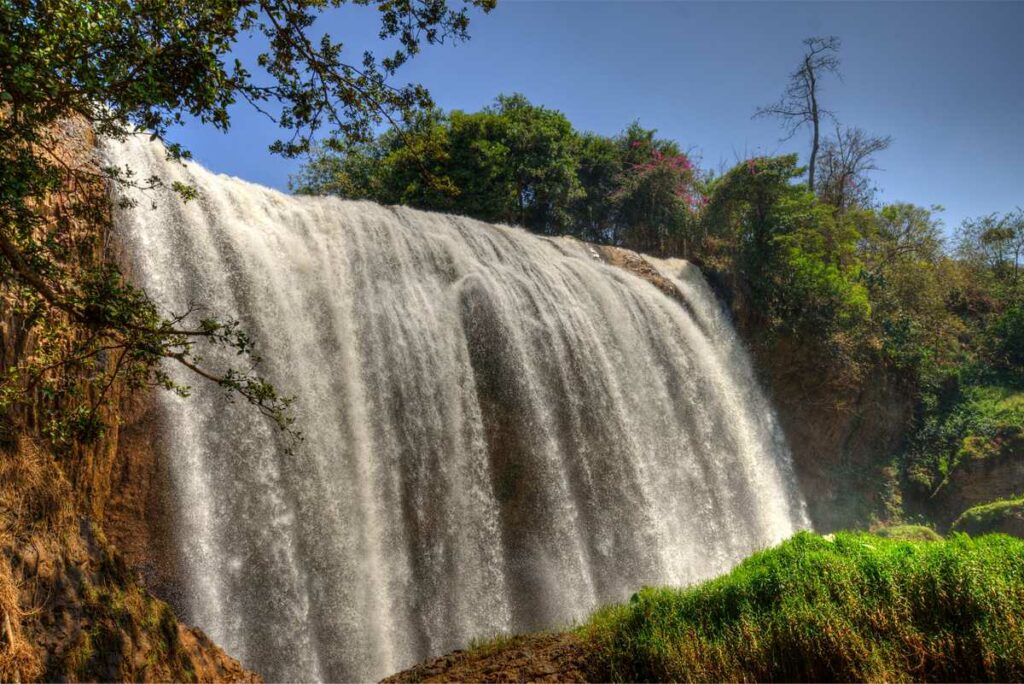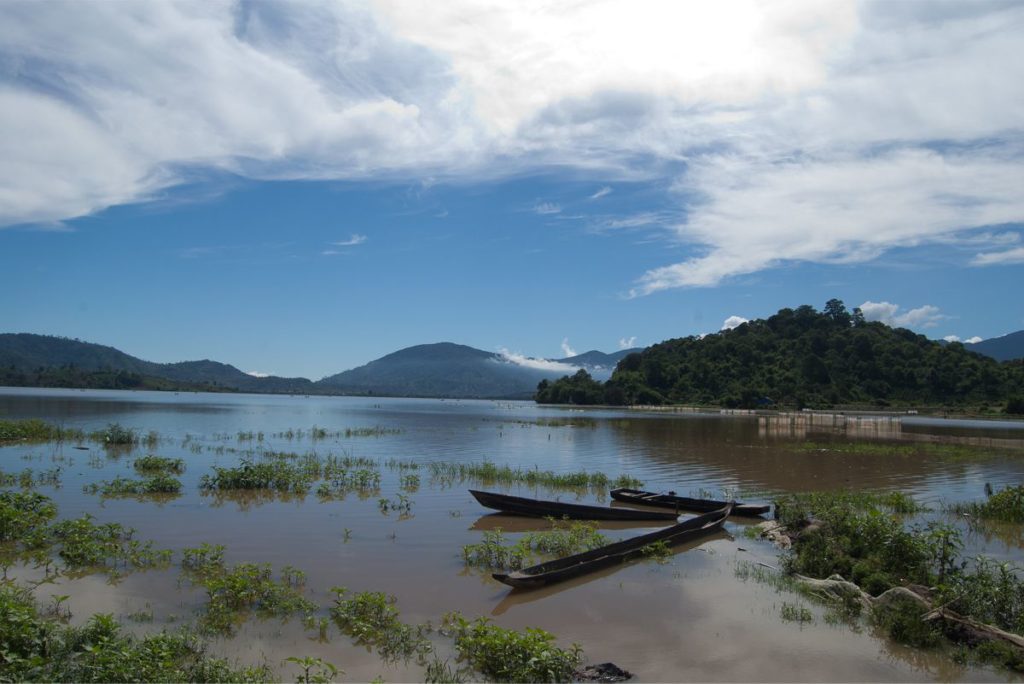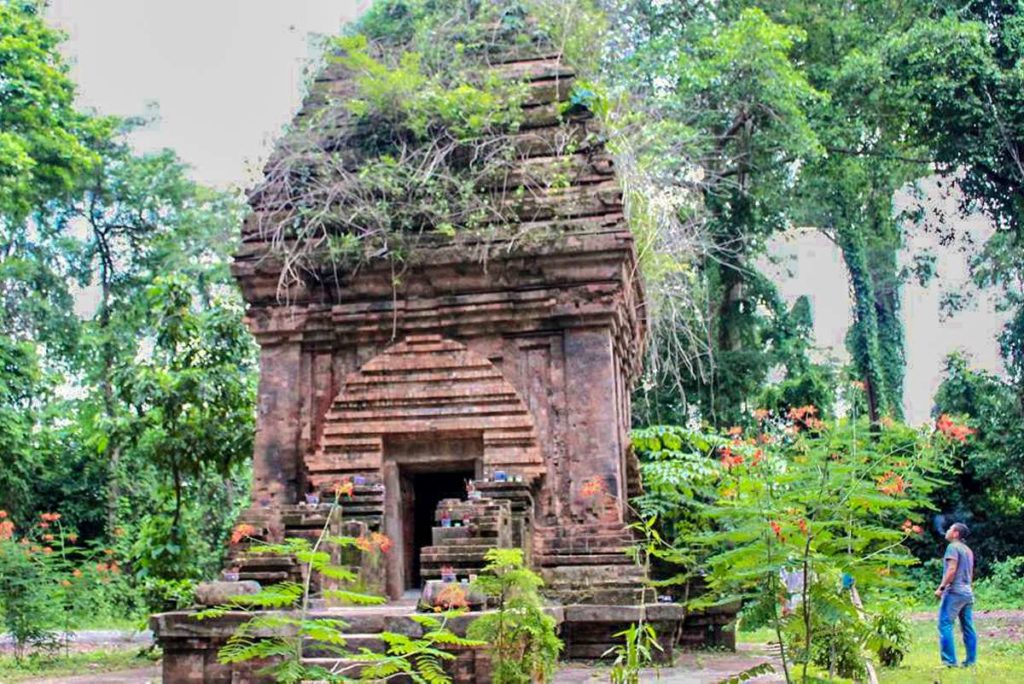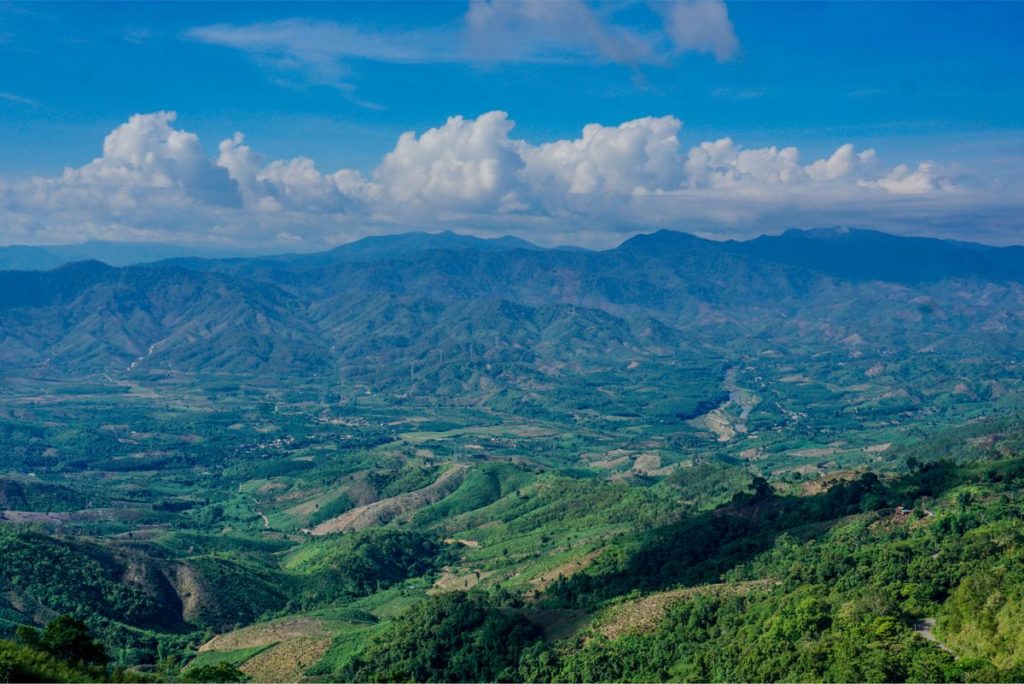The unknown and mysterious region of the Central Highlands of Vietnam are often skipped in the popular tourist itineraries in Vietnam. It is an area with extensive forests, impressive mountains that are home to ethnic minorities who have always maintained their traditions and identity. It is the perfect place for adventurers and travelers looking to get off the beaten track to discover the real Vietnam.
- About the Central Highlands
- During the Vietnam War
- Dalat (Lam Dong)
- Dak Lak
- Pleiku (Gia Lai)
- Kon Tum
- Getting around
- Best time to visit
Overview of the Central Highlands
Many travelers choose to travel along the well-known and busy beach route through Central Vietnam, but the central highlands are a great alternative for this. Instead of beach towns, you will find huge forest areas, impressive mountains, a unique culture of ethnic minorities, beautiful waterfalls and tranquil lakes.
The Central Highlands comprises five provinces: Dak Lak, Dak Nong, Gia Lai, Kon Tum, and Lam Dong (Dalat). The region is located on a series of platueas and neighbors Laos and Cambodia. For a long time, the region remained largely untouched, mainly populated by the Degar, who were given the name Montagnards by the French. The group is made up of many ethnic minority communities, the largest of which are the Jarai, the Rade, the Bahnar, the Koho and the Mnong. The highlanders lived largely undisturbed, and it wasn’t until the French illustrated the agricultural value of the land that things started to change. The gradual colonization of the area by the Vietnamese population sparked protests from the indigenous population.

This, along with long-standing tensions between the ethnic minority communities and the government, led to a ban on tourist visits to the area in the early 2000s. While restrictions have since been lifted, there are some areas that still require police permits, guides, or increased sensitivity while traveling.
The central highlands of Vietnam was one of the wildest areas, with dense jungles teeming with wildlife such as elephants, tigers, monkeys and bears. Because the height and the ground are also perfect for coffee and tea plantations, more and more forest disappeared to agriculture. With this, most of the large rare wild animals in Vietnam also disappeared. Fortunately, parts of the central highlands are now protected and converted into a national parks.
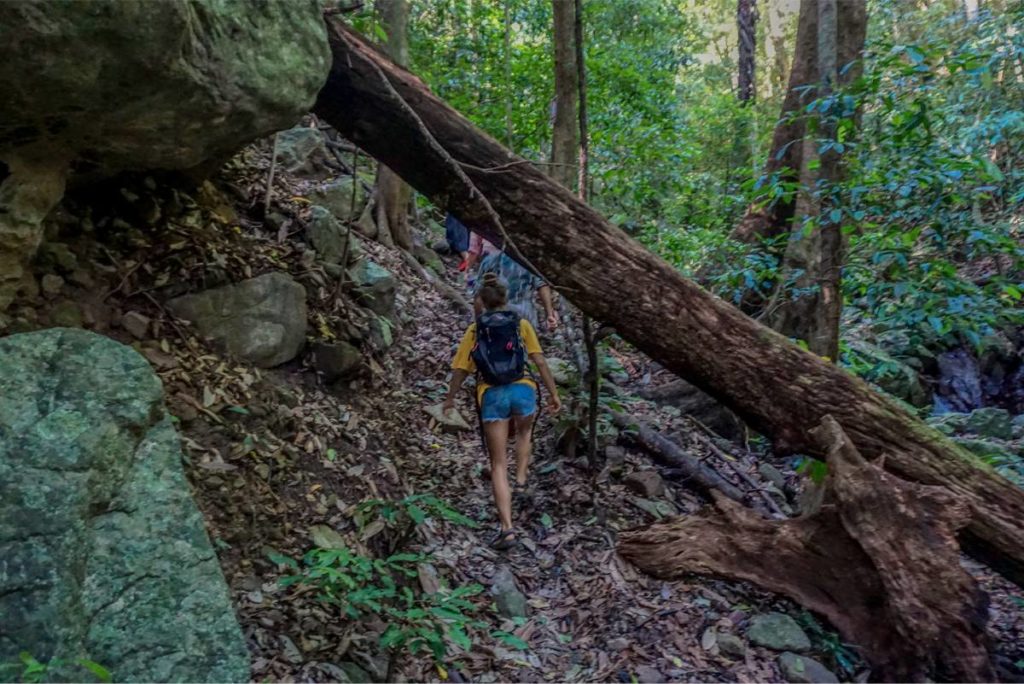

Today coffee plantations have grown to such an extent that Vietnam is now the second largest coffee exporter in the world. When you drive through this area, especially around Dak Lak, you will see endless of these plantations.
A journey through this area takes you past plantations, through the mountains and forests, visit villages of ethnic minorities with unique cultures, gaze at beautiful lakes and thundering waterfalls. The central highlands of Vietnam are the perfect area for the real adventurer!
Central Highlands during the Vietnam War
What many travelers don’t realize is that the Central Highlands of Vietnam was the biggest battlefield during the Vietnam War. The most deadly battles have been fought here.
In 1965, the Viet Cong attacked a US base and helicopter base near the town of Ban Me Thuot. This was the start of the bombing that America began on North Vietnam in retaliation. Pleiku was hit hard at the end of the war. The central location was used by the South Vietnamese and American forces as a base, but eventually succumbed to the North Vietnamese forces in 1975. The defeat endangered many local indigenous people with many deaths. The city itself was completely destroyed and has since been rebuilt in a largely Soviet style.
Kon Tum saw massive devastation during the US-Vietnamese War. If you drive through this area you can still see the damage that Agent Orange has caused. Around Kon Tum was the American base Dak To camp with Phoenix runway and Charlie Hill, where the battle of Dak To took place. The US forces suffered about 1,800 casualties with this battle.
Buon Ma Thuot, the capital of Dak Lak, was the site of the fateful 1975 battle that led to the withdrawal of the South Vietnamese army. Since the devastation of the war, it has been rebuilt, modernized, and maintenance is comparable to many other cities in Vietnam.
Dalat (Lam Dong)
Dalat is the Highlands’ most popular destinations, followed by Buon Ma Thuot, Kon Tum and Pleiku. The scenery is breathtaking. Forests, waterfalls, lakes and rivers are accessible for hiking and mountain biking, and there is plenty to see. To the south is Cat Tien National Park, one of the most biologically diverse locations in Indochina. Challenge yourself to pass winding roads, romantic landscapes of strawberry fields, sunflower hills and mysterious pine forests, and admire solemn churches, minority villages and fantastic waterfalls. If you are very adventurous, try a canyoning tour, where you will abseil and cliff jump from waterfalls.
Some best sights in Dalat
Dak Lak
Buon Ma Thuot is located at an altitude of 530 meters above sea level and is the beautiful capital of Dak Lak province and the largest city in the central highlands. It is also referred to as the coffee capital of Vietnam, due to the many coffee plantations in this region and some of the large coffee brands that are located here.
In the region you can take great trips to beautiful waterfalls such as Dray Nur and Dray H’ling, tranquil lakes such as Lak Lake and learn about unique cultures of ethnic minorities in several authentic villages. The Yok Don National Park is the highlight of the area, where you can go hiking and even spot elephants!
A number of top sights in Dak Lak
Pleiku (Gia Lai)
Pleiku is located in the middle of the central highlands and is the capital of the province of Gia Lai. There is little to see and do in this completely rebuilt city, but outside in the province you will find some of the most beautiful waterfalls in Vietnam, ancient volcanoes, plantations and lakes. You can go on treks from a whole day to several days and there are several minority villages that you can visit.
Some top sights in Pleiku (Gia Lai)
Kon Tum
Like Buon Ma Thuot and Pleiku, Kon Tum saw massive destruction during the Vietnam War. Now, however, the atmosphere is peaceful and inviting, and the town is a good base for exploring the many ethnic minority villages that surround it. The city itself has a number of interesting aspects. The Montagnard Church is particularly interesting because it combines aspects of French colonial design all crafted in wood.
Outside the sleepy city, a number of different ethnic minorities live in traditional villages, most of which are welcoming to visitors, although it is still recommended that you travel with a guide. There are eight different minority groups in the area, each with their own unique culture. The Kon Tom region has great potential to become a real trekking destination, with rugged forests and mountains, rivers and lakes.
Some top sights in Kon Tum
Getting around in the central highlands
Easy Rider
Both the best and most enjoyable way to explore the Central Highlands is on the back of a local guide’s motorcycle. These motorcycle guides are also known as Easy Riders and although they can be found all over Vietnam today, their origins come from this area. It has become more and more popular in recent years and it is easy to see why.
Riding a motorcycle yourself is not for everyone, after all, Vietnam does not have the safest roads. A local motorcycle guide offers a safe and comfortable alternative. They know how to find every spot, popular places and off the beaten track. You come to places that you would otherwise never see and through them you can communicate with the locals. It is hands down the best thing to do in the central highlands.
Bus
There are no trains running through the mountains of the central highlands, but it has an excellent bus network. Most of the towns in this region are linked by bus lines and it is possible to hop off in towns and cities that are on their routes, making it easy to reach each place. See below for an overview of the most popular bus connections in the central highlands.
| From/To | Dalat (Lam Dong) | Buon Ma Thuot (Dak Lak) | Pleiku (Gia Lai) | Kon Tum (Kontum) |
| Dalat | – | 6 hour | 9 hour | 10 hour |
| Buon Ma Thuot | 6 hour | – | 3 hour | 5 hour |
| Pleiku | 9 hour | 3 hour | – | 1 hour |
| Kon Tum | 10 hour | 5 hour | 1 hour | – |
| Ho Chi Minh City | 7 hour | 7 – 9 hour | 11 hour | 13 hour |
| Nha Trang | 3 hour | 4 hour | 8 hour | 9 hour |
| Da Nang/Hoi An | 13 – 15 hour | 12 hour | 10 hour | 8 hour |
| Hue | 15 hour | 15 hour | 10 hour | 9 hour |
| Quy Nhon | 7 hour | 6 hour | 4 hour | n.b. |
Motorbike
Most people choose to travel through the main regions of the Central Highlands by motorcycle, either as part of an organized tour or independently. Traveling independently or as a passenger on a motorcycle is a great way to take in the incredible scenery of the trip. The larger towns, while usually unremarkable in themselves, provide a good place to rest and a base for further exploration of the provinces.
Regional airports
The central highlands in Vietnam have 3 airports; in Dalat, Buon Ma Thuot and Pleiku. Flights are operated by Vietnam Airlines, Vietjet Air and Jetstar. Flights are generally not used for travel within the central highlands, but you can quickly travel to cities further into Vietnam such as Hanoi, Ho Chi Minh City and Da Nang.
Best time to visit the central highlands
Average temperatures in the Central Highlands are cooler than in the coastal areas due to the elevated elevation. Temperatures still reach 30 degrees from February to April. The dry season runs from November to April and the wet season from May to October. The best time to travel in the central highlands is after the wet season, when the land is greenest and temperatures start to rise.







